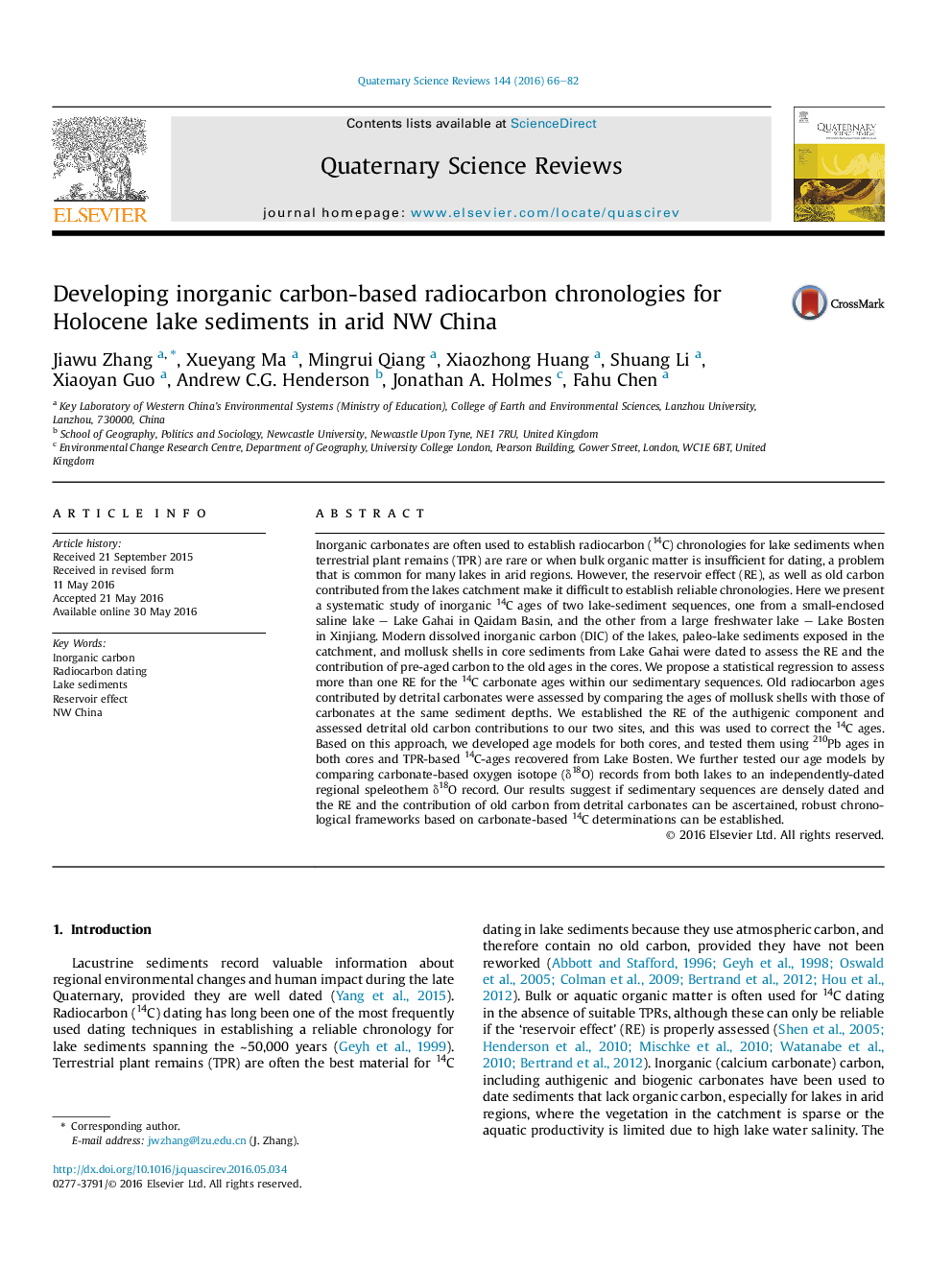| کد مقاله | کد نشریه | سال انتشار | مقاله انگلیسی | نسخه تمام متن |
|---|---|---|---|---|
| 4735982 | 1640791 | 2016 | 17 صفحه PDF | دانلود رایگان |
• Inorganic carbon materials for chronological purpose have been dated systematically with AMS 14C along two Holocene cores.
• Modern water DIC, mollusk shells in core sediments and exposed paleolake sediments in the catchment have also been dated.
• An improved regression method has been developed to assess more than one RE for a lacustrine sediment sequences.
• The inorganic carbon chronologies for core sediments from both fresh and saline lakes have been tested, proven to be robust.
Inorganic carbonates are often used to establish radiocarbon (14C) chronologies for lake sediments when terrestrial plant remains (TPR) are rare or when bulk organic matter is insufficient for dating, a problem that is common for many lakes in arid regions. However, the reservoir effect (RE), as well as old carbon contributed from the lakes catchment make it difficult to establish reliable chronologies. Here we present a systematic study of inorganic 14C ages of two lake-sediment sequences, one from a small-enclosed saline lake – Lake Gahai in Qaidam Basin, and the other from a large freshwater lake – Lake Bosten in Xinjiang. Modern dissolved inorganic carbon (DIC) of the lakes, paleo-lake sediments exposed in the catchment, and mollusk shells in core sediments from Lake Gahai were dated to assess the RE and the contribution of pre-aged carbon to the old ages in the cores. We propose a statistical regression to assess more than one RE for the 14C carbonate ages within our sedimentary sequences. Old radiocarbon ages contributed by detrital carbonates were assessed by comparing the ages of mollusk shells with those of carbonates at the same sediment depths. We established the RE of the authigenic component and assessed detrital old carbon contributions to our two sites, and this was used to correct the 14C ages. Based on this approach, we developed age models for both cores, and tested them using 210Pb ages in both cores and TPR-based 14C-ages recovered from Lake Bosten. We further tested our age models by comparing carbonate-based oxygen isotope (δ18O) records from both lakes to an independently-dated regional speleothem δ18O record. Our results suggest if sedimentary sequences are densely dated and the RE and the contribution of old carbon from detrital carbonates can be ascertained, robust chronological frameworks based on carbonate-based 14C determinations can be established.
Figure optionsDownload as PowerPoint slide
Journal: Quaternary Science Reviews - Volume 144, 15 July 2016, Pages 66–82
